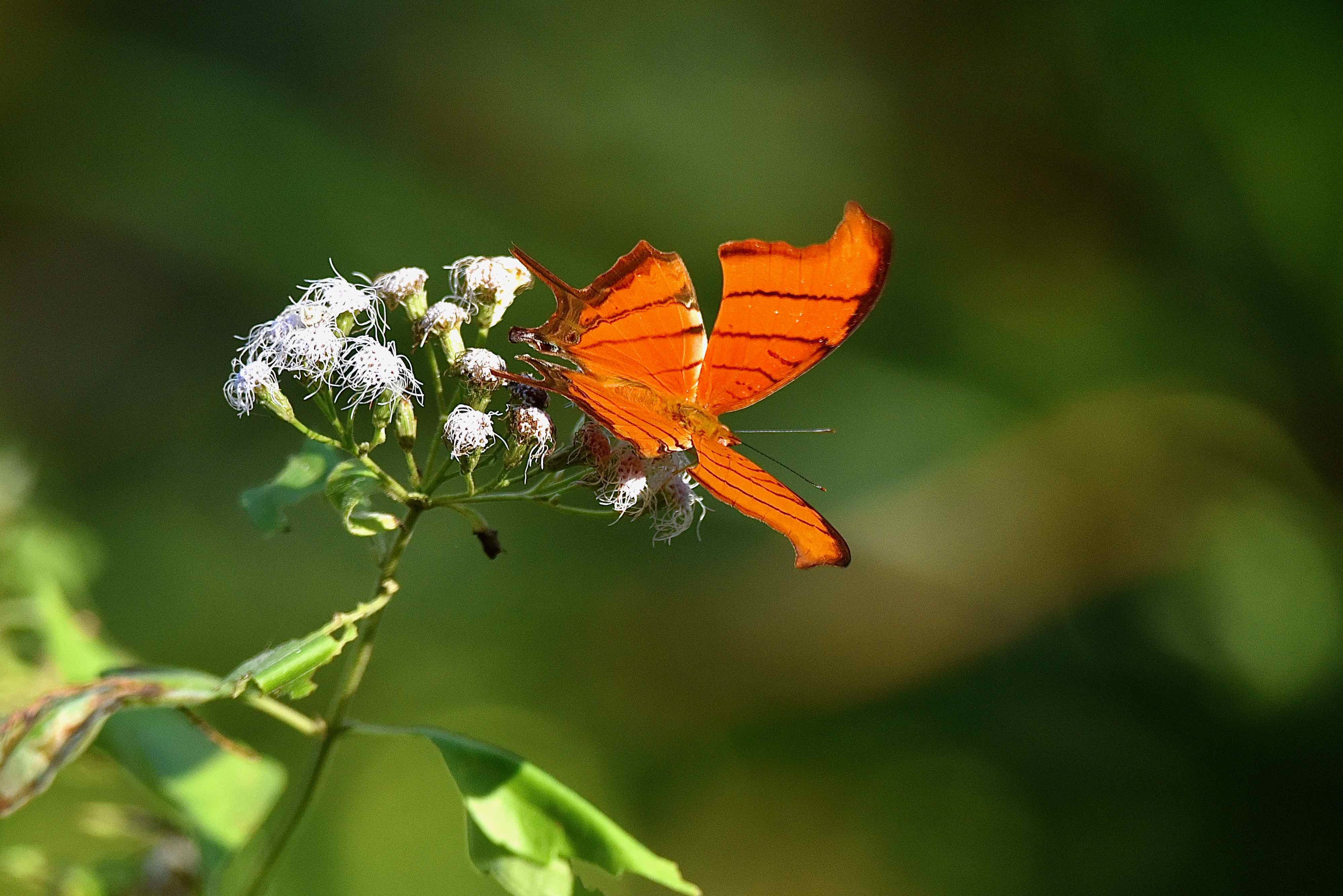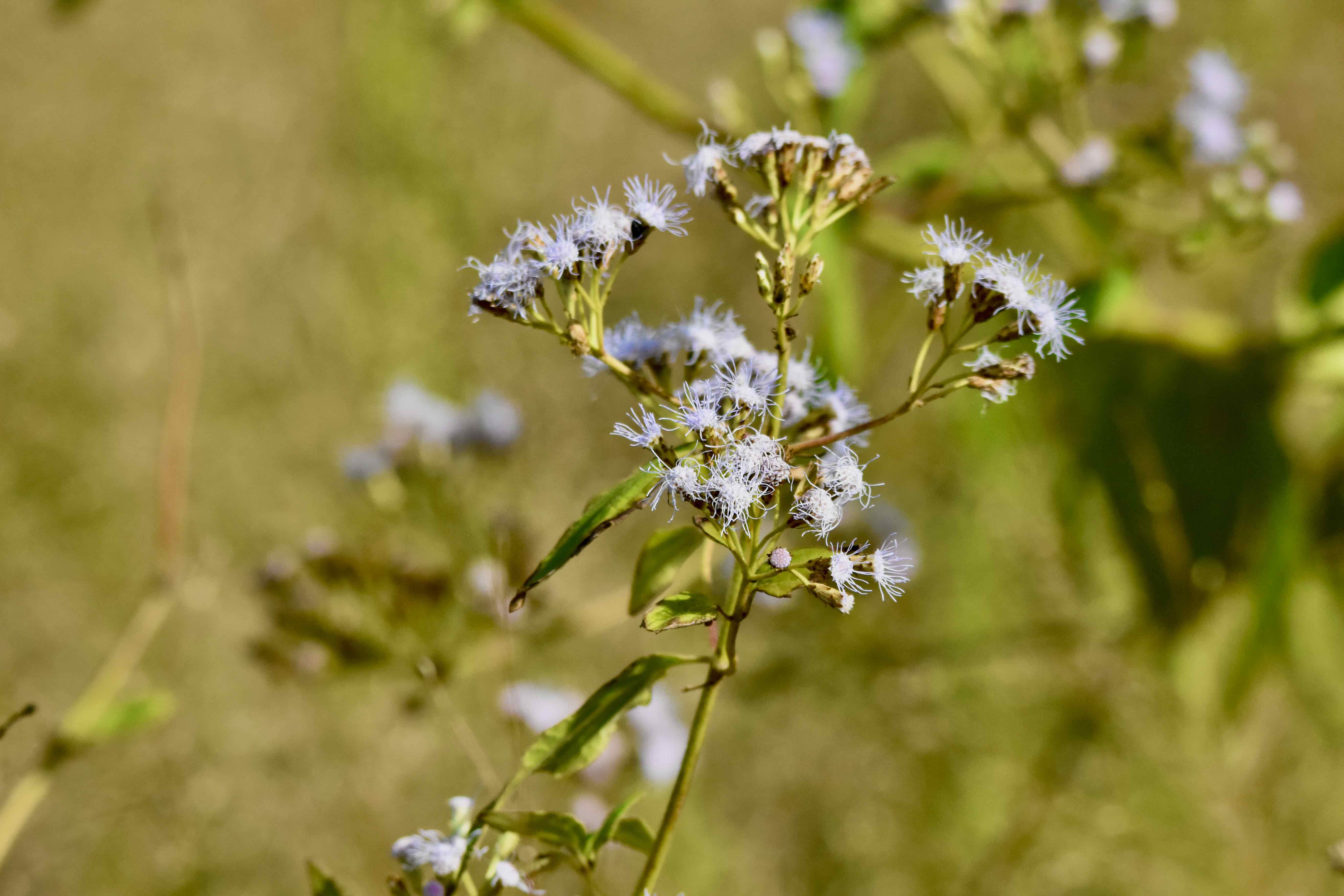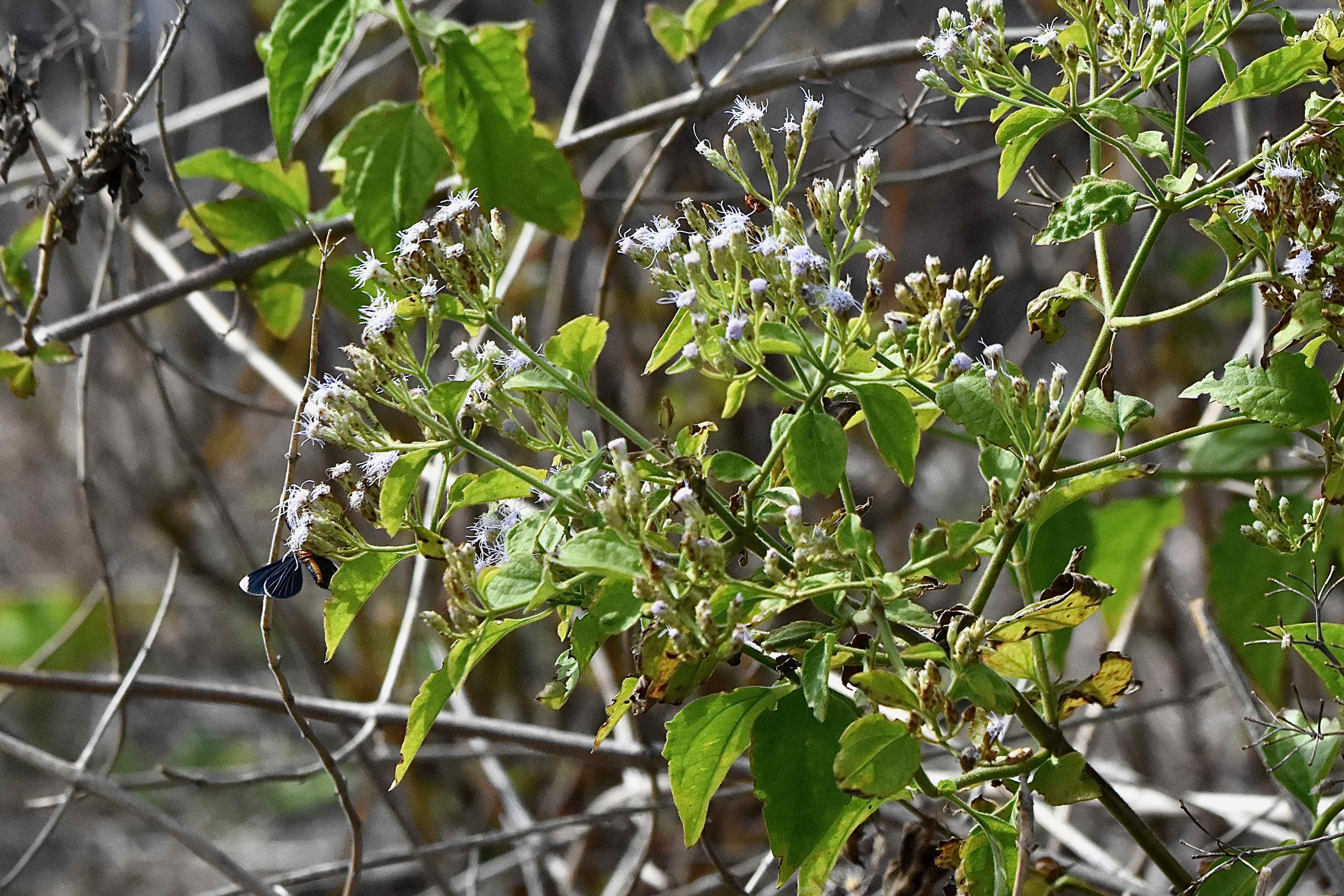
Jack-in-the-bush (with a daggerwing butterfly), photographed at Loxahatchee National Wildlife Refuge, Boynton Beach, Palm Beach County, in January 2020.
We tried mightily to come up with the origin of the name, Jack-in-the-bush, known to scientists as Chromolaena odorata. We came up with jack. As in not a clue.
In any case, it’s a Florida native and a common one at that, found throughout the Peninsula from the central part of the state south into the Keys, and in a wide variety of habitats.
Some would argue that it is a bit too common. It is a veritable seed-producing machine, one of the most aggressive shrubs native to the Sunshine State, and a giant pain in the butt in tropical and subtropical places around the globe. More than a pain in the butt, actually.
It’s also a butterfly magnet, its flowers attracting dozens of species of the winged insects wanting to sip on its nectar. Which you would think would make it the perfect plant for butterfly gardens. But it’s so aggressive that Delray Beach-based Institute for Regional Conservation actually warns against planting it.
Perhaps all of this is a clue as to its name: like a Jack-in-the-box, it just seems to pop up. Everywhere. Jack-in-the-bush. Maybe.
The natural range for our guy — let’s just call him Jack — includes the aforementioned parts of Florida and a few counties in Texas along the Gulf Coast and in the southern Rio Grande Valley. It’s also found in the Caribbean, where it’s popular in traditional medicine, Mexico, Central America and South America.
It’s been spread deliberately and by accident to warmer and wetter places around the world, including western and southern Africa, Asia, Australia and the Pacific, and everywhere it's gone, it has become a major invasive headache. But let’s get to some botanical basics.
Jack is a shrubby, herbaceous (not woody) plant that generally tops out at about shoulder height, but can, under the right circumstances and the support of a nearby tree, reach 30 feet into the air. The leaves are more or less triangular — sometimes long and narrow and triangular, sometimes oval-shaped and triangular, sometimes just plain triangular. They are arranged in pairs opposite each other along the stem, velvety to the touch, sometimes serrated along the edges, sometimes not. When crushed, the leaves produce an odor. Odorata.
The flowers are rayless and range in color from white to light blue to violet. Jack can bloom all year but does mostly between October and December. The blooms are more noticeable than they might be otherwise because fewer plants are flowering that time of year and because it’s seemingly everywhere. In fact, one of its many common names: Christmas bush. Between 20 and 60 flower heads can be atop a flower stalk known botanically as a corymb.
The flowers are somewhat attractive, but the rest of the plant can be “leggy,” or in plain language, unattractive, raggedy, nearly ugly, especially well after peak flowering season.
Preferred habits include the edges of hammocks, thickets, pinelands and disturbed areas. It can quickly take over a newly cleared or disturbed area, like a farmer’s field. It prefers full sun to part-shade: it does not tolerate shade.
If Jack isn’t among the world’s 100 most noxious invasives — there are organizations that track these things — it probably should be. As we said earlier, jack is a seed machine. A single plant can produce as many as 800,000 wind-dispersed seeds in a year, and those seeds can remain viable for at least a year, possibly as long as five years.
It also produces alleleopathic chemicals, which deter other plant species from growing near by. The result can be huge, dense swaths of Jack and nothing else. It’s devastating if it takes over a pasture, since it’s toxic to livestock. Burn it and it will grow back. Burn an area, and it will use the new nutrients in the soil to take over the open space. It can grow as rapidly as an inch a day.
Thing is, while it’s nectar attracts dozens of species of butterflies, it doesn’t even need pollinators to produce seeds. It will do it all by itself.
In South Africa, it has taken over open spaces that Nile crocodiles need for nesting; in places, its fibrous roots make the ground unsuitable for nest-building, and in other places, the shade it produces affects ground termperatures. That might not seem like a big deal until you realize that the sex of embryonic crocs is determined by temperature, and cooler temperatures throw off the ratio of females to males in the species. It can even make embryonic development impossible.
So how did this noxious weed make its away around the globe? Dates back to the 19th century, when it was imported into India as an ornamental, of all things. By the 1920s, it had made its way into Malayasia, Indonesia and Indochina. World War II helped spread it throughout the Pacific, corresponding with troop movements.
Jack has been exported for use as cover crop and as a “green manure” to help farmers who practiced slash-and-burn agriculture transition to more sustainable methods. Once Jack gets established, however, it tends to stay established to the exclusion of other plants. During the 1950s, the renowned botantist, Auguste Chevalier, actually recommended Jack as a means of countering an invasive grass that plagued West African farms. Sort of like using one fatal disease to cure another.
It’s been transmitted via cattle. It’s been transmitted via machinery, earth-moving equipment, cars and trucks, through shipments of contaminated seeds and even shipments of sand, soil and gravel.
Where Jack is native, like Florida, the plants that grow around it have co-evolved with it, so they can coexist with it and keep it in check to a degree. Where Jack is an exotic, native flora have no such defenses.
But even Jack isn’t all bad. In Jamaica, it’s used in traditional medicine to treat, the flu, colds, coughs, asthma, to break fevers, treat diabetes and as an anti-inflammatory. If it was used similarly by Florida’s early residents, we couldn’t find any record of it.
Other common names include Siam weed (because early infestations in Asia seemed to originate in Thailand), blue mist flower (not to be confused with another Florida native with somewhat similar-looking flowers that goes by that common name), fragrant mist flower, fragrant boneset (because of its resemblance to a genus of plants commonly known as bonesets because of their use to treat dengue fever, also known as break-bone fever), Crucita, bitter bush, common floss bush and, fittingly, devil weed. It is a member of Asteraceae, the sunflower family.



